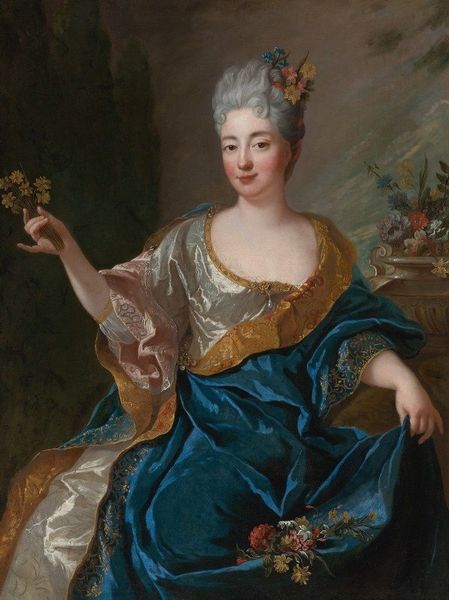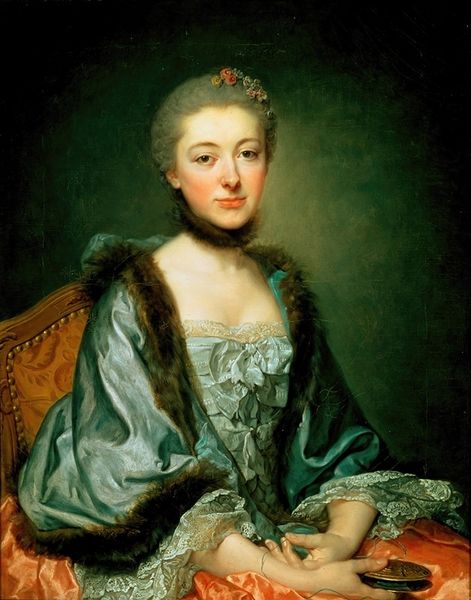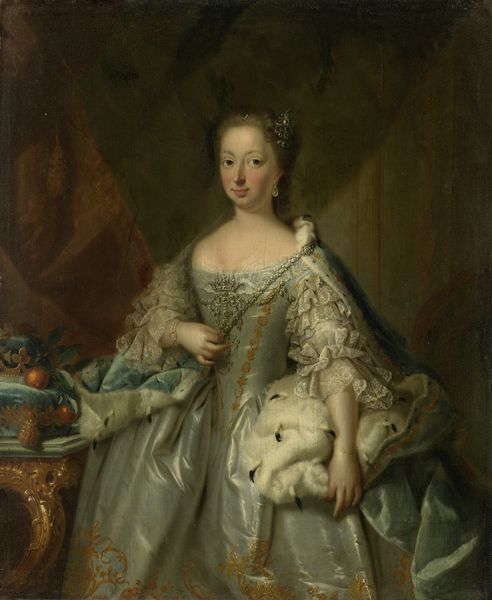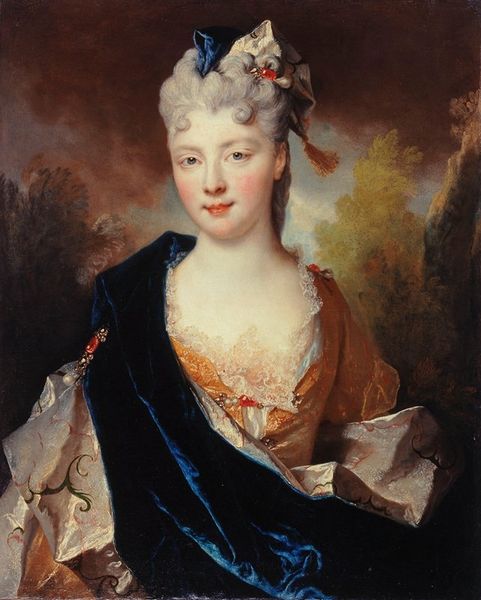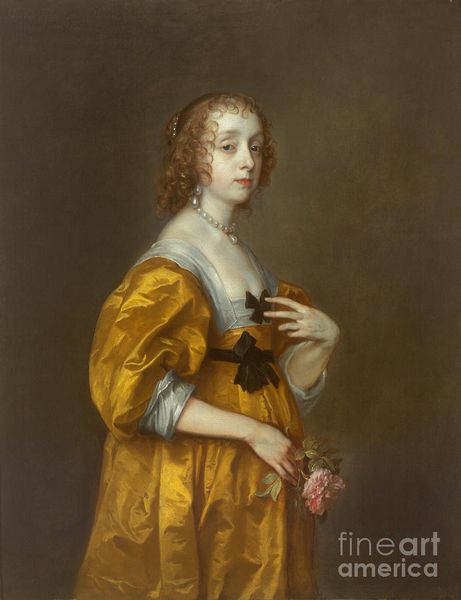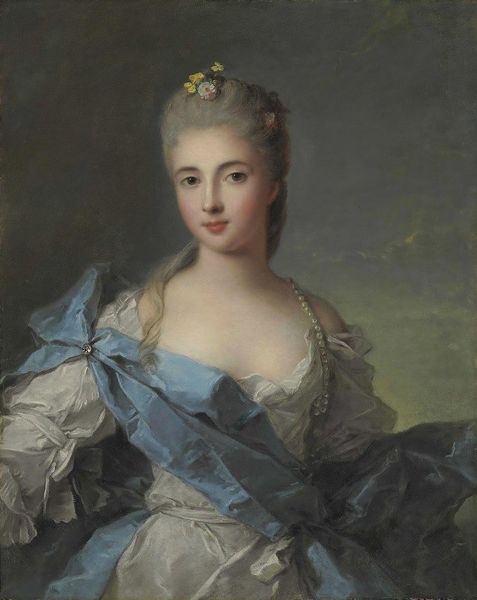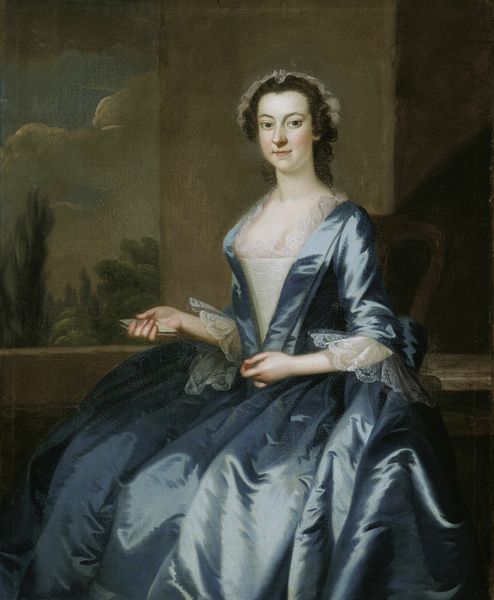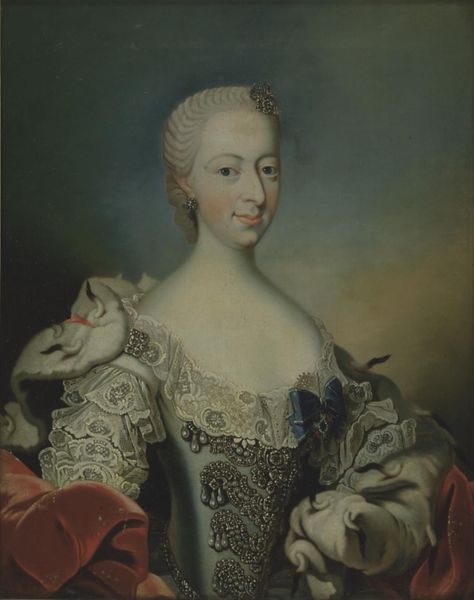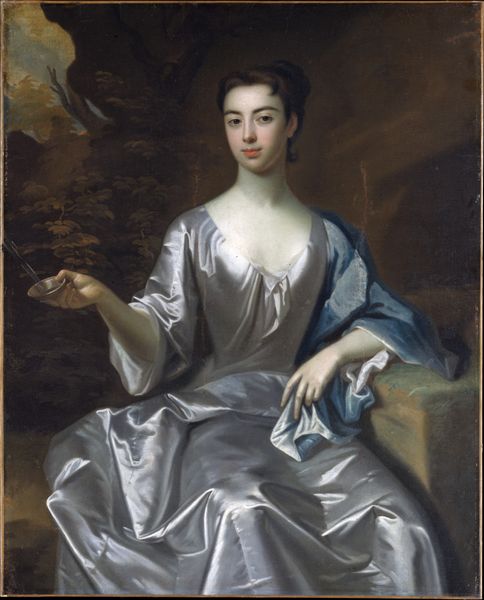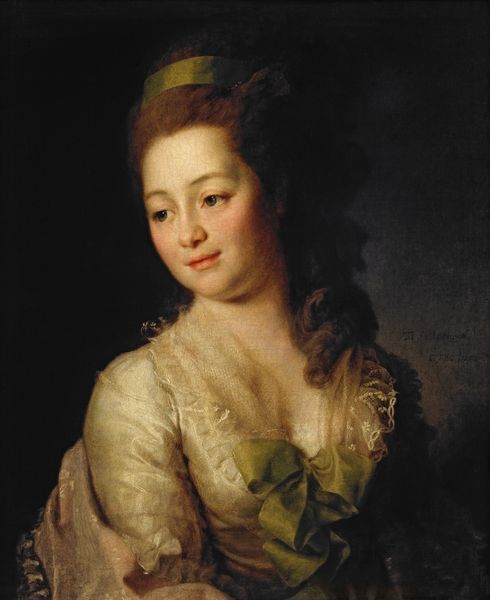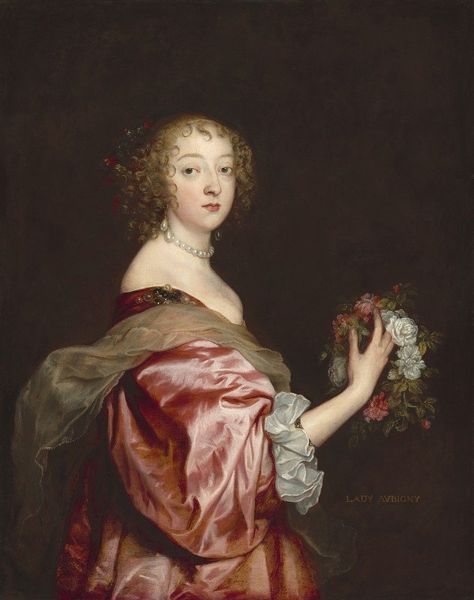
Portrait of the Countess Maria Benedetta Di San Martino 1785
0:00
0:00
pompeobatoni
Thyssen-Bornemisza Museum, Madrid, Spain
Copyright: Public domain
Editor: Here we have Pompeo Batoni’s "Portrait of the Countess Maria Benedetta Di San Martino," painted in 1785. I’m immediately drawn to the textures: the lace, the silk of the dress, the sheen of the pearls. What can you tell me about this work? Curator: Look closely at how Batoni uses oil paint not just to represent these textures, but to *create* them. The layering of paint mimics the layering of lace, the thickness suggests the volume of silk. He’s using the material properties of paint itself to communicate status and wealth through these representations of fabrics, pearls, and decorative objects. Consider the social context, too: these are not just aesthetic choices, but displays of economic power made visible through the artist’s skilled labor and material manipulation. The silver bowl in the foreground and the labor and material invested to realize this painting speak volumes, wouldn't you agree? Editor: I do. The Countess’s clothing practically shouts about status. The ruffled details! So, you're saying the painting itself is also a valuable object, its creation a demonstration of resources? Curator: Precisely. This wasn’t simply about likeness; it’s about the production and consumption of luxury goods, of which this painting is a prime example. The paint pigments themselves would have been costly, alongside the artist’s skill in manipulating them. What do you think about the setting and the background details? Editor: The draping in the back adds to the feeling of richness, yet there are limited elements of design in the setting; perhaps a subtle note to avoid taking attention from the Countess herself and her expensive fabrics. Curator: An interesting observation. It's all a constructed performance of class. Reflect on how this performance, rendered in paint and canvas, both reinforces and perpetuates a social hierarchy reliant on materials, artistic skill, and, perhaps most critically, disposable income. Editor: I hadn't thought about it that way, but viewing the painting as another luxurious object helps clarify the context in which it was made. Thank you. Curator: A fascinating image when considered for the material circumstances that brought it to life, and how, by understanding that context, we find ourselves analyzing a unique facet of eighteenth-century nobility.
Comments
No comments
Be the first to comment and join the conversation on the ultimate creative platform.
